Materials
- Nutrient agar powder
- Spatula
- Weighing boat
- Weighing scales
- Distilled water
- Measuring cylinder
- Conical flask
- Heat resistant gloves
- Eye protection
- Non-absorbent cotton wool
- Aluminium foil
- Bunsen burner, tripod and mat
- Universal bottles and lids (for plates)
- 2 McCartney or Universal bottles
- Autoclave tape (optional)
- Water bath
- Marker pen
- Autoclave or pressure cooker
Instructions
Wear a lab coat and use eye protection. Wear heat resistant gloves when handling hot equipment.
Label McCartney bottles (for slopes) with name, date and type of medium (use autoclave tape).
Label universal containers (for plates).
Calculate the volume of medium you require (20 cm3 per plate, 12 cm3 per slope).
Calculate the weight of dry medium required to make up that volume (see container to calculate correct weight).
 Measure out the weight of nutrient agar powder you have calculated.
Measure out the weight of nutrient agar powder you have calculated.
Add agar powder to the desired volume of distilled water in a conical flask and swirl around.
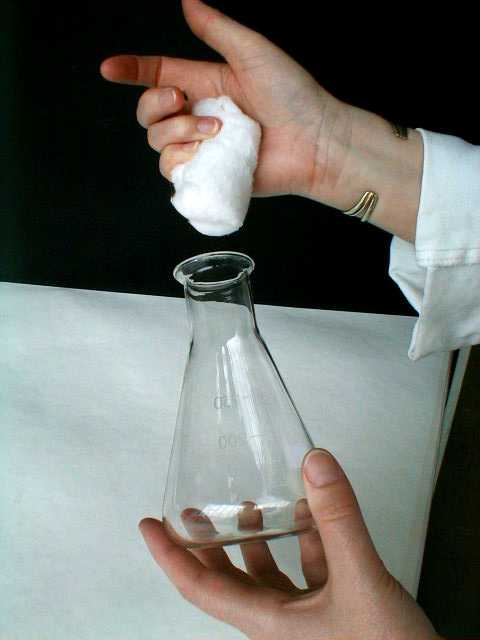 Make cotton wool stopper.
Make cotton wool stopper.
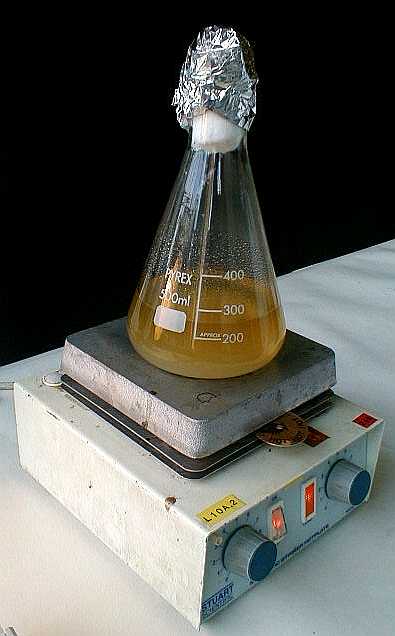
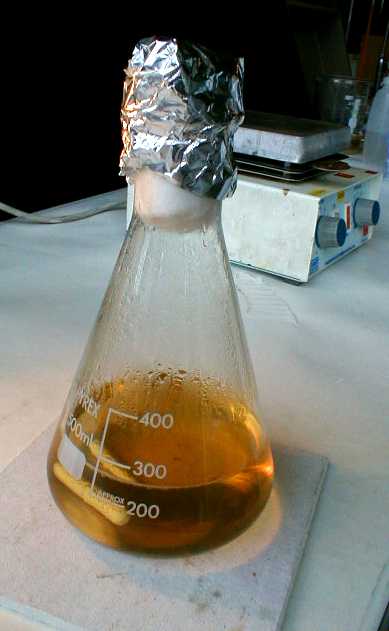 Place stopper in neck of conical flask and cover with aluminium foil (this prevents the cotton wool catching fire when over a Bunsen flame).
Place stopper in neck of conical flask and cover with aluminium foil (this prevents the cotton wool catching fire when over a Bunsen flame).
Place the conical flask containing the agar in a water bath (metal pot) or on a magnetic heater.
Heat in the water bath over a Bunsen flame, gently swirling occasionally (use a heat resistant glove) until it dissolves fully. (N.B. The solution must be heated until the liquid is transparent, otherwise the agar will not set properly).
Add 12 cm3 molten agar to each McCartney bottle.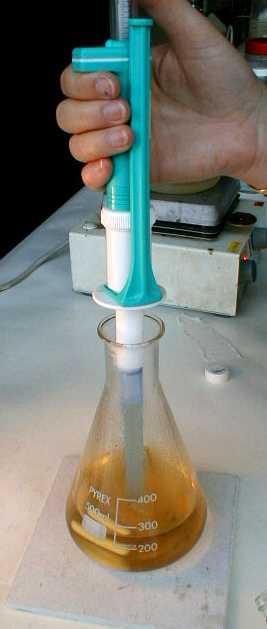
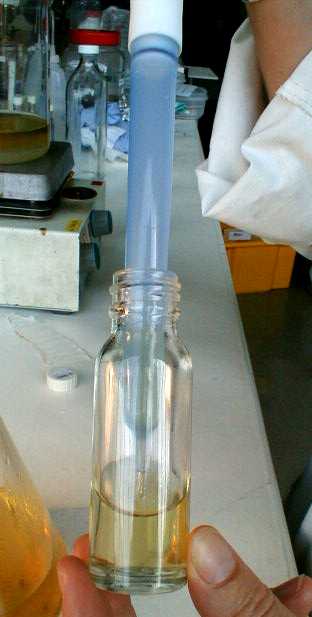
Pour molten agar into the universal containers leaving a space of 2 – 3 cm at the top.
Put caps on loosely.
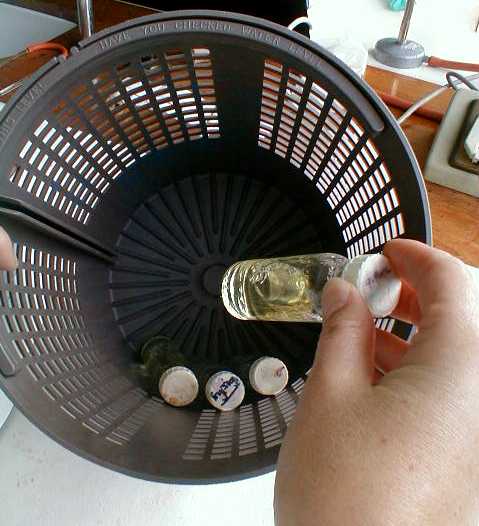 Place in basket for sterilisation.
Place in basket for sterilisation.
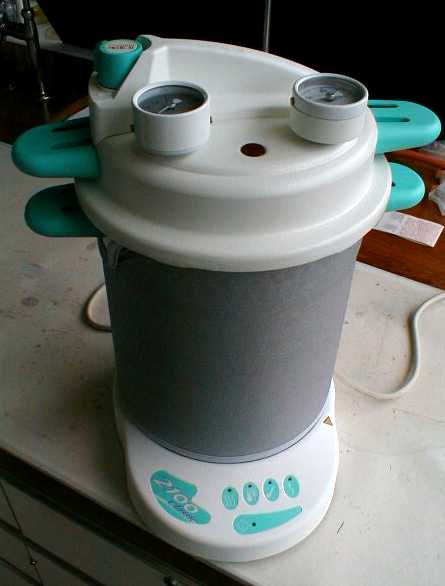
Autoclave for 15 minutes at 121°C.
To form agar slopes, cool McCartney bottles to 55°C, tighten lids then lie bottle at an angle against a marker pen or similar.
To pour plates, cool universals to 55°C in a water bath .
If the agar is not required immediately, it can be cooled and stored till required. Tighten lids as soon as agar has cooled and store for up to three months. When required, loosen lids slightly and melt the agar (heat to 100°C in a water bath or autoclave then cool to 55°C and pour plates as normal).
Using aseptic technique, dispense agar from each universal into one sterile plastic Petri dish (see Pouring plates ).
When pouring large numbers of plates from a bottle, the operator must decide whether to flame the neck between each plate or at the start and end. There is a trade off between speed of the operation and flaming which depends on circumstances such as skill of operator and work area. After pouring, plates can be stacked to reduce the amount of condensation which forms on the lids. Placing two spare plates, each almost full of hot water (just off the boil) on the top of the stack, will reduce condensation still further.



